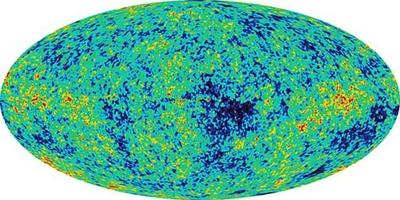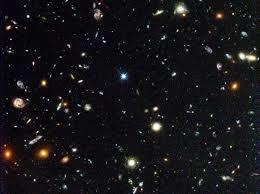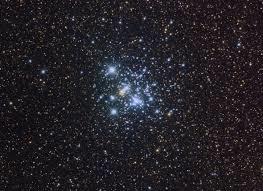Introduction
Since time immemorial, humans have questioned the origin of the universe. In a bid to establish the origin of the universe, scientists formulated some theories. The Big Bang Theory is one of the theories that explain the origin, development, and the nature of the universe. The theory uses physical laws and cosmic forces in elucidating the origin, development, and the nature of the universe.
The premise of the Big Bang Theory is that the universe originated from a massive explosion of a mass of atoms. The massive explosion generated an explosive force that propelled matter at incomprehensible speed leading to the expansion of the matter into galaxies. Georges Lemaitre and Edwin Hubble are two discoverers of the Big Bang Theory, who made notable observations that the universe emanated from cosmic expansion because galaxies are drifting apart from the center of the universe (Bortz, 2014).
The Big Bang Theory is very plausible in the scientific world because physical laws and cosmic forces support the expansion of matter and drifting of galaxies in the universe. This essay, therefore, examines the assumptions and scientific evidence that support the Big Bang Theory.
Assumptions and Evidence for the Big Bang Theory
The Assumptions
Cosmological Singularity
One of the assumptions underlying the Big Bang Theory is the assumption of cosmological singularity. This assumption is very important in the explanation of the origin and development of the universe according to the principles of the Big Bang Theory. In this assumption of cosmological singularity, the Big Bang Theory holds that matter, cosmic forces, and physical laws originated from a finite time in the past prior to the existence of explosion and expansion of the universe (Tillery, Enger, & Ross, 2012).
Cosmological singularity forms the basis of the Big Bang Theory because it assumes that matter originated from a finite point in time. The evolution of matter from a finite time resulted in cosmological singularity where the massive explosion took place and triggered the emergence of cosmic forces and physical laws. Scientists have formulated physical laws and identified cosmic forces, which could predict cosmological singularity. Hence, the major assumption of the Big Bang Theory is that matter existed prior to the emergence of the massive explosion.
Homogenous Expansion Space
In explaining the expansion of the universe, the Big Bang Theory assumes that expansion occurs in a definite space that is homogenous. In essence, the explosion of matter created a space that expands with time. The expanding matter that emanates from the explosion does not expand to fill a space, but it expands from within the expanding space while letting galaxies, objects, and other bodies to move proportionally (Tillery, Enger, & Ross, 2012). The law of relativity elucidates the expansion of space in terms of metric units of spacetime. Metric defines the distances between neighboring galaxies, objects, or other bodies that are in space.
The coordinate chart can illustrate the distances of galaxies, objects, and other bodies in a manner that their relative positions indicate spacetime. Given that the expanding space is homogenous, the rate of expansion maintains the coordinates of the comoving points, and thus, coordinate distance remains proportionate to the expanding space. Hence, the assumption of the expanding space is central to the Big Bang Theory because it describes the nature of space in which explosion occurred and expanded into the universe.
Horizons
Since the Big Bang Theory elucidates the occurrence of explosion and expansion of the matter in spacetime, it assumes that there are horizons, which mark the past and future limits. The assumption of the horizons holds that events of the Big Bang Theory have finite attributes as speed, light, temperature, pressure, and density amongst others.
The assumption of horizons implies that some events in the universe are not comprehensible because they might have reached their finite spacetime before humans perceived their existence. This assumption, therefore, gives the Big Bang Theory the leeway of predicting the existence of galaxies and objects that have exhausted their lifetime in the universe (Bortz, 2014).
The past horizon illustrates the existence of the furthest objects that are observable. In contrast, the future horizon illustrates the existence of the furthest objects that are predictable using physical laws and cosmic forces. Thus, the past and future horizons remain mere assumptions because they are not verifiable.
Scientific Evidence
Redshift of Light
In elucidating the Big Bang Theory, Edwin Hubble used redshift of light as compelling evidence. The evidence is compelling because astronomers can determine the existence of redshift in the light that galaxies emit (Rhee, 2013). Fundamentally, redshift means that observers on the earth’s surface perceive different frequencies of light that galaxies emit in the universe owing to the difference in distances.
During the explosion, the explosive force made different galaxies, objects, and other bodies to move at different speeds. As the moving bodies migrate at different speeds, the lights that they emit experience the Doppler Effect. Essentially, Doppler Effect is the alteration of the frequency of the wave relative to the distance of the observer. In this case, the frequency of light emitted by galaxies alters relative to distances of their emission from the earth’s surface. Observation of galaxies in space indicates that distant galaxies emit lights that have a longer wavelength than close galaxies. This observation is evident in the redshift of light emitted from distant galaxies.


Figure 1 and Figure 2 above illustrates redshift of light emitted from a distant galaxy relative to the sun (Rhee, 2013).
Edwin Hubble formulated the law that allows determination of redshift. The Hubble’s law recessional velocity of a galaxy is directly proportional to their comoving distances (Rhee, 2013). Essentially, the formula is v = Hd, where v is recessional velocity, d is comoving distance, and H is Hubble’s constant. Recessional velocities and distances of galaxies have a linear relationship in which the gradient is the Hubble’s constant. Since the distance from the sun to the earth is known, the luminosity of galaxies relative to the sun provides a way of estimating distances (Rhee, 2013).
Parallax aids in the estimation of distances based on the relative luminosity of galaxies in space. In the determination of velocities, wavelengths and frequencies of lights are applicable for they indicate the extent of redshift relative to the velocity of known bodies in the universe. Hence, Hubble’s law is integral in elucidating the Big Bang Theory because it also offers compelling evidence. The existence of the mathematical formula that determines the existence of redshift supports the occurrence of the Big Bang Theory.
Cosmic Background Radiation
The discovery of cosmic background radiation by Robert Wilson and Arno Penzias in 1965 boosted the scientific stance of the Big Bang Theory. The premise of the cosmic background radiation is that the density of the universe has been decreasing with time owing to the expansion of space after the occurrence of the massive explosion. The interaction of matter and light in the universe creates cosmic radiation, which is the landmark of the Big Bang Theory.
Rhee (2013) states that the Big Bang, which is the massive explosion that happened in the past horizon of spacetime, left the background radiation in the form of galaxies and stars. In essence, the background radiation offers a primitive view of space immediately after the occurrence of the Big Bang. Rhee (2013) asserts that the spectrum of the cosmic background radiation has undergone redshift owing to the expansion of space, according to the Big Bang Theory.
The National Aeronautics and Space Administration (NASA) launched a satellite, which detects the existence and pattern of cosmic background radiation across the globe. Hence, the existence and the variation of the cosmic background radiation across the globe effectively support the Big Bang Theory.

The Abundance of Primordial Elements
The primordial elements, namely, hydrogen, helium, deuterium, and lithium are the most abundant elements in the universe owing to the explanation of the Big Bang Theory. These elements are primordial elements because they formed matter that existed during the Big Bang and consequently expanded to fill the universe. Canetti, Drewes, and Shaposhnikov (2012) assert when the primitive atmosphere cooled and allowed the existence of lighter atoms, the Bing Bang triggered nucleosynthesis of helium, deuterium, and lithium.
Thus, the abundance of helium and deuterium in the universe formed the basis of the emission of light by the bodies in the universe. Rhee (2013) argues that helium and deuterium are abundant in the sun because they burn and emit enormous heat and light that reach the earth’s surface. Hence, the discovery of these primordial elements in the sun led to their identification in the universe and the stars.
Rhee (2013) gives a precise proportion of primordial elements by stating that “for every 10,000 atoms of hydrogen in the universe, there are 975 atoms of helium, six atoms of oxygen, and an atom of carbon” (p. 48). In this perspective, the nucleosynthesis of the primordial elements supports the Big Bang Theory for the massive explosion causes the existence of the current abundances in the universe.
Structure and Distribution of Galaxies
The structure and distribution of galaxies in space are in line with the tenets of the Big Bang Theory. The structure of the universe shows that planets and other bodies have oval structures owing to the centrifugal and centripetal forces. Centrifugal force causes bulging at the equatorial planes while centripetal force causes flattening at the polar planes (Anderson, 2015). Moreover, the structure of bodies in space follows some organization because there is a pattern of density in the structure of galaxies, galaxy clusters, and huge bodies.
The arrangement of cosmic background radiation varies according to the temperature and density of their sources. Regarding the distribution of bodies in space, observations made on the universe show that galaxies emanated from the Big Bang. The attributes of the redshift, which are evident when observed from the earth, clearly depict the distribution of bodies. The distribution confirms that the Big Bag provided an explosive force that accelerated galaxies and other bodies in the universe.
Anderson (2015) argues that the formation of stars and galaxies follows a hierarchical pattern in which the smaller structures form first, and then, they later coalesce into large structures. Therefore, the Big Bang theory provides a plausible explanation the structure and distribution of bodies in space


Existence of Pristine Clouds
Recent discoveries revealed that primordial clouds exist in the universe. Analysis of the spectra that emanate from the distant quasars and galaxies indicate that primordial gas forms pristine clouds in the universe. Prior to the discovery, astronomers had established that galaxies and stars contain atoms that are usually lighter than the primordial elements such as lithium, deuterium, and hydrogen. In this view, Canetti, Drewes, and Shaposhnikov (2012) affirm that the primordial clouds formed when lighter atoms combined during the Big Bang.
The Big Bang nucleosynthesis accurately predicted the existence of such clouds in the primitive space prior to the expansion of the universe and the emergence of bodies. Anderson (2015) reveals that primordial clouds because the primordial matter existed as neutral hydrogen. Hence, the existence of primordial clouds offers compelling evidence that indeed Big Bang took place in the past horizon.
Conclusion
The Big Bang Theory has stood the test of time because it offers compelling evidence regarding the origin, development, and the nature of the universe. The theory relies on three assumptions, namely, cosmological singularity, homogenous expansion space, and infinite horizons. These assumptions set the background of the compelling evidence that supports the occurrence of the Big Bang.
The redshift of light, cosmic background radiation, the abundance of primordial elements, the structure and distribution of galaxies, and the existence of pristine clouds are five pillars that support the Big Bang Theory. Analysis of these evidence shows that the Big Bang Theory is still relevant to the modern world for astronomers continue to reveal additional findings.
References
Aunderson, R. (2015). The Cosmic Compendium: The Big Bang and the Early Universe. London: Lulu Publisher.
Bortz, F. (2014). The Big Bang theory: Edwin Hubble and the origins of the universe. New York: The Rosen Publishing Group.
Canetti, L., Drewes, M., & Shaposhnikov, M. (2012). Matter and anti-matter in the universe. New Journal of Physics, 14(1), 1-20.
National Aeronautics Space and Administration: The Big Bang. (2015). Web.
Rhee, G. (2013). Cosmic dawn: The search for the first stars and galaxies. New York: Springer Science.
Tillery, B., Enger, E., & Ross, F. (2012). Integrated science. London: McGraw-Hill.